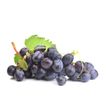Find articles on products of interest
624 content(s) found
Opinion
Explore insights from our global team of market analysts on trending South Korea Fresh Grape topics through their expert opinions and analyses.
On-the-Ground Updates
Stay updated with near real-time insights on market conditions, supply chain disruptions, and pricing changes for South Korea Fresh Grape, delivered by our on-site experts.
News
Monitor the latest developments in agricultural news, including policy updates, business trends, technological innovations, and market dynamics impacting the South Korea Fresh Grape market.
Weekly Product Updates
Receive exclusive weekly updates on South Korea Fresh Grape, provided by our global market analysts.
Report
Download premium reports that highlight major trends, emerging opportunities, and critical challenges within the South Korea Fresh Grape industry.
Trending topics
Choose a topic to explore related articles on key issues that shape decision-making in the South Korea Fresh Grape industry.

Market & Price Trends
Stay informed on local and global agricultural market trends, price movements, and industry events that affect your business

Regulation & Compliances
Learn about key trade policies, legal requirements, and compliance considerations that impact global agricultural trade

Innovation & Technology
Discover how the latest innovations in technology are reshaping agri-food supply chains around the world

Sustainability & Environmental Impact
Gain insights into sustainable agricultural practices and explore the best methods to minimize environmental impact in your agribusiness

Supply Chain Management
Discover proven strategies to improve efficiency, reduce costs, and streamline operations throughtout your agri-food supply chain

Emerging Market Opportunities
Be the first to explore new market opportunities and understand how they can affect your agribusiness
Related categories of Fresh Grape
Take a look at the related categories for South Korea Fresh Grape. Click on any category to read a curated selection of insights specifically designed to address your business needs.
Market countries of Fresh Grape
Choose a country to find Fresh Grape insights of the country.
Popular Fresh Grape selection
Interested in South Korea Fresh Grape? Explore the top attributes and options to gain deeper insights into your product of interest.
Variety
Crimson Seedless (=Crimson=C102-26) | Red Seeded - Red Globe | Flame | Superior (=Sugarone=Sugraone=Menindee Seedless) | Thompson (=Thompson Seedless=Sultana=Sultanina=Sultan) | Black Seedless - Autumn Royal | Prime | Victoria | Early Sweet | Red Seedless - Timco (=Timko)
Processed style
Fresh (=Chilled) | Natural | Washed | Dried | Dried - VD (Vacuum Drying) | Frozen | Frozen - IQF (=Individual Quick Freezing) | Refrigerated | Frozen - BQF | Unwashed
Color
Red | Green&White | Black | Green (=Unripe=Sour) | Green | Purple | Dark Color | White | Light Color | Purplish Red
By clicking “Accept Cookies,” I agree to provide cookies for statistical and personalized preference purposes. To learn more about our cookies, please read our Privacy Policy.




















